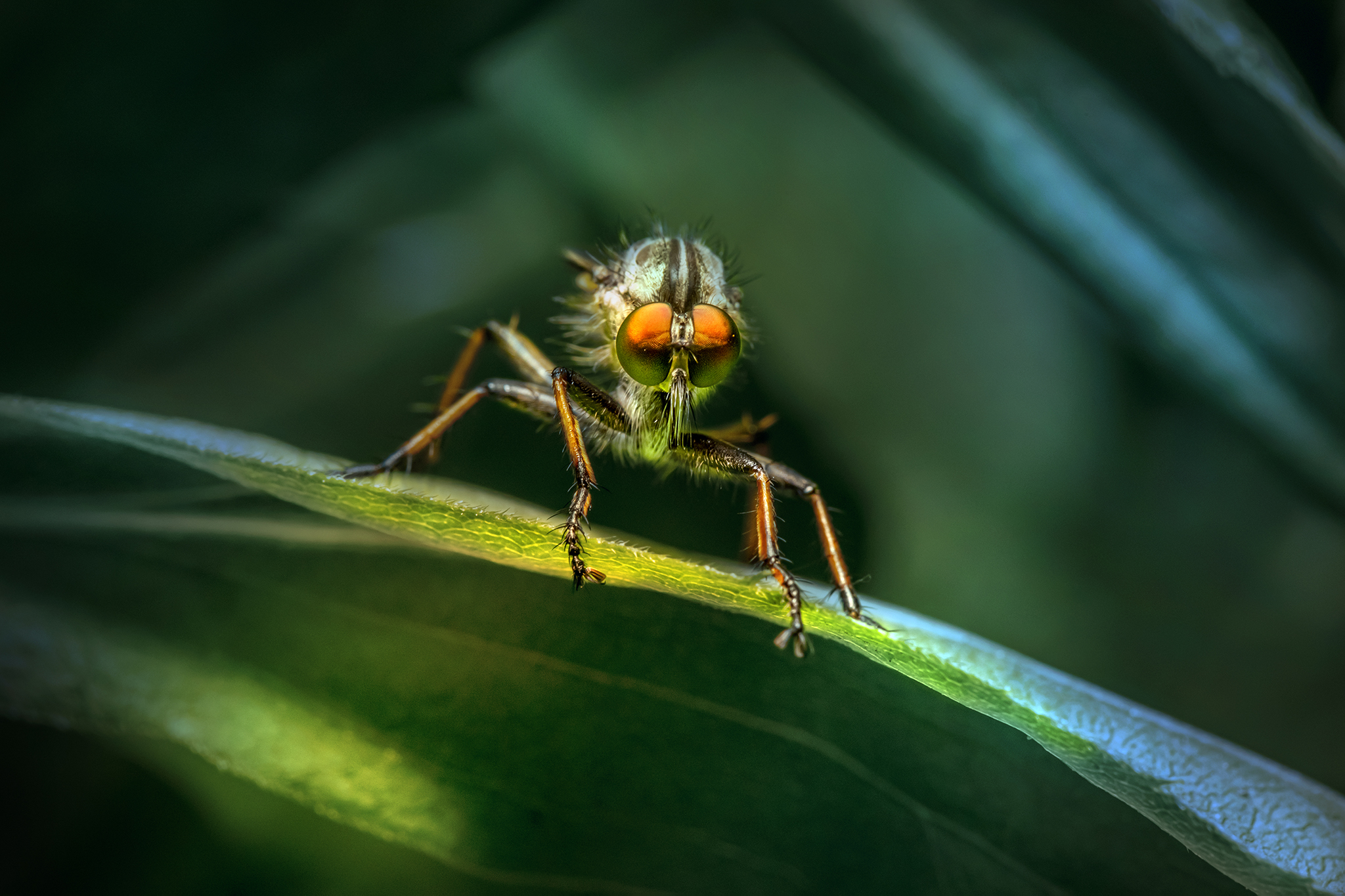Robberflies are a diverse group of predatory insects belonging to the family Asilidae, within the order Diptera (true flies). Here’s some information about robberflies:
- Appearance: Robberflies typically have a robust, elongated body with a stout proboscis (mouthpart) adapted for piercing and sucking fluids from their prey. They are often characterized by their bristly bodies and large, prominent compound eyes. Their coloration varies, but many species have patterns of brown, black, and yellow markings.
- Habitat: Robberflies can be found in a wide range of habitats, including grasslands, forests, deserts, and even urban areas. They are most commonly seen perched on vegetation or other elevated objects, scanning for prey.
- Predatory Behavior: As voracious predators, robberflies primarily feed on other insects, including flies, bees, wasps, beetles, and even other robberflies. They are agile fliers and are known for their aerial hunting prowess. Robberflies often ambush their prey in mid-air, capturing them with their strong legs and piercing mouthparts.
- Life Cycle: Robberflies undergo complete metamorphosis, with egg, larval, pupal, and adult stages. The larvae are typically found in soil, leaf litter, or decaying organic matter, where they prey on small invertebrates. Once mature, the larvae pupate and eventually emerge as adult robberflies.
- Ecological Role: Robberflies play an essential role in regulating insect populations, particularly those of pest species. As efficient predators, they help control populations of various insect pests, contributing to the overall balance of ecosystems.
- Mimicry: Some species of robberflies exhibit Batesian mimicry, where they resemble other stinging or venomous insects such as bees, wasps, or hornets. This mimicry serves as a form of defense against potential predators.
Robberflies are fascinating insects with remarkable hunting abilities, making them an intriguing subject of study for entomologists and nature enthusiasts alike.
Visited 900 times, 2 visit(s) today
Views: 1418
Subscribe to the newsletter:
